The Reading Chair: Spring 2023
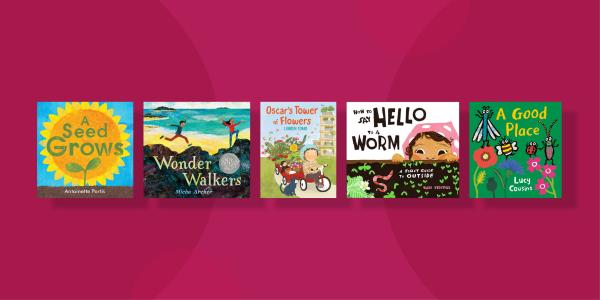
You are here
It’s springtime! Planting and growing season is here, and nature is transforming all around. Children love planting seeds, watching buds turn into blooms, and examining insects. In this edition of The Reading Chair, we’re highlighting gardening and growing books. But they’re not only about nature. A good picture book works on many levels.
Early childhood educators can use A Good Place to launch conversations about individual needs within a group. A Seed Grows is inspiration for printmaking activities using sponges or cut fruit. How to Say Hello to a Worm: A First Guide to Outside gives practical information on gardening and interacting with nature for children and adults alike. Oscar’s Tower of Flowers can be a starting point for talking with children about separation anxiety, while educators can use Wonder Walkers as a springboard for art and language activities centered on nature.
Each book offers plenty for any season and setting.
– Isabel Baker and Miriam Baker Schiffer
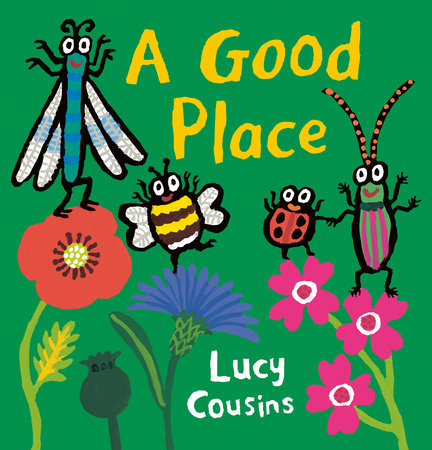 A Good Place
A Good Place
By Lucy Cousins. 2022. Somerville, MA: Candlewick Press.
40 pp. Ages 1 to 5.
Four insect friends with different needs are searching for a place to live in this rollicking and well-paced tale. But each time one of them thinks they’ve found it, they have a near miss with humans. There’s foot traffic in one spot, cars speeding by in another, a pile of garbage here, and insecticide there. Then they discover a garden that a little boy has made just for insects. It has everything they need, like dead wood for the beetle and flowers for the bees.
The vibrant illustrations by Cousins (author of the well-known Maisy series) give the insects lots of personality. The story, which contains age-appropriate information on bug habitats, is not just a good STEM (science, technology, engineering, and mathematics) book, but it also offers perspective on individual needs and working together to ensure that everyone’s needs are met. In the story, each bug needs something different, and each bug’s needs are met in the home they eventually settle in together.
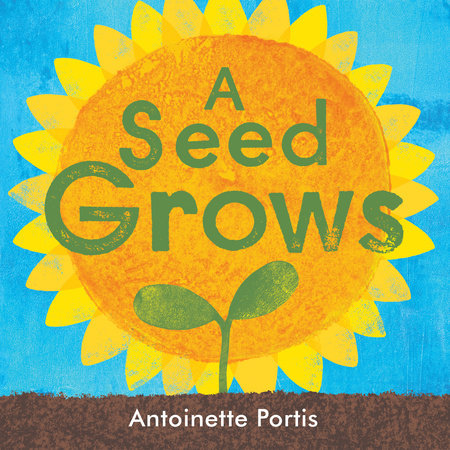 A Seed Grows
A Seed Grows
By Antoinette Portis. 2022. New York: Neal Porter Books.
40 pp. Ages 1 to 5.
This simple and stunning book teaches readers about the life cycle of a sunflower. A sunflower seed falls to the ground, settles into the soil, and grows into a beautiful flower. When the flower drops its seeds and a bird carries one away, only to have it fall to the ground, the cycle starts again. Portis’ illustrations are bright and inviting, made by layering different printmaking techniques. A foldout page extends upward, revealing the glory of the fully grown sunflower. This informative and satisfying text can jumpstart science explorations focused on plants and making connections to plants in children’s home and community environments.
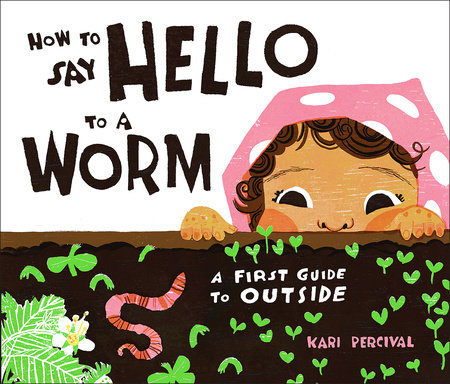 How to Say Hello to a Worm: A First Guide to Outside
How to Say Hello to a Worm: A First Guide to Outside
By Kari Percival. 2022. New York: Rise x Penguin Workshop.
40 pp. Ages 2 to 6.
Percival’s debut picture book showcases her training in both art and environmental science. With graphically bold and appealing illustrations, Percival delivers delightfully on the book’s subtitle. An engaging cast of young gardeners takes readers on a tour through the garden. They show how to plant a seed (“sprinkle, sprinkle” and “pat, pat”), greet a worm (“gently, very gently”), and water new sprouts.
The book reads like a breeze, but it is full of information, including a whimsical how-to on making mud and practical instructions for working around bees. There is a lovely spread about how to identify when a strawberry is ripe: not when it’s green or white or pink, but when it’s deep red. The children in the book represent diverse social identities, including those related to race and physical ability, and all are shown actively engaged in gardening. A guide at the end offers tips for children and adults who want to start gardening.
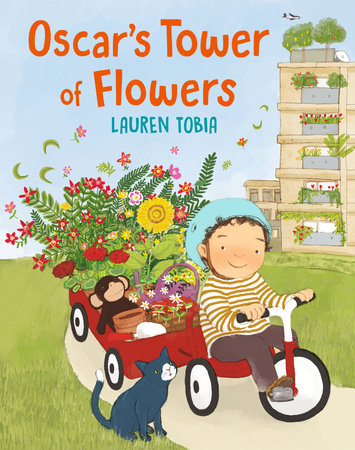 Oscar’s Tower of Flowers
Oscar’s Tower of Flowers
By Lauren Tobia. 2021. Somerville, MA: Candlewick Press.
40 pp. Ages 2 to 7.
When Oscar’s mother leaves for a trip, he stays with his grandma. Oscar misses his mom, but he stays busy. Together with his grandma, he settles in, makes some art, and plants a bunch of seeds in every jar he can find. A growing frenzy fills the apartment with greenery. Oscar shares the plants with all the neighbors, finding a way to connect at a time when he is missing connection with his favorite person. Oscar and his mother reunite in the end. Along with their joy in reconnecting, it is apparent that the new connections spurred by Oscar and his plants have continued to blossom across the building.
Throughout this wordless picture book, readers will feel Oscar’s longing and will delight in all that he accomplishes at the same time. Tobia’s illustrations feature a lovely contrast between Oscar’s tender, tentative feelings and the verdant bounty of the plants he grows. This is a good story that features a responsive home caregiver other than a parent, which young readers may find relatable and reassuring. Many pages feature small illustrations that will be easiest to share in smaller groups or one-on-one, and readers can create their own versions of the storyline as they look (and relook) at the pages.
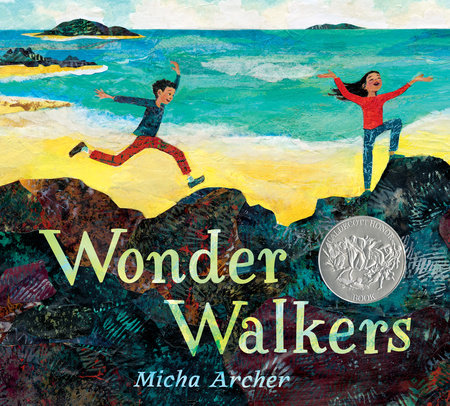 Wonder Walkers
Wonder Walkers
By Micha Archer. 2021. New York: Nancy Paulsen Books.
32 pp. Ages 4 to 8.
There’s nothing like a walk in nature to clear one’s mind and also fill it with creative imaginings. This pair of pals (siblings, perhaps) calls these jaunts “wonder walks.” They head out into the woods behind their house and ask themselves big questions inspired by small discoveries. “Is fog the river’s blanket?” one asks. “Is dirt the world’s skin?” The text is poetic, simple, and thought provoking. The ink and collage illustrations look the way nature feels, almost three-dimensional and multisensory, as if you can hear the waves and feel the wind.
Wonder Walkers is full of extension possibilities. Children can make layered tissue-paper collages, as Archer does. They can create their own metaphors about the natural world and talk about where they like to take walks themselves.
Isabel Baker, MAT, MLS, is the founding director of The Book Vine for Children, a national company dedicated to getting good books into the hands of preschool children and their teachers. Isabel has worked as a children’s librarian and is currently a presenter on early literacy and book selection.
Miriam Baker Schiffer, MFA, is a writer in Brooklyn, New York. She consults on book selections for The Book Vine, in McHenry, Illinois. Miriam’s children’s book, Stella Brings the Family, was published by Chronicle Books in 2015.